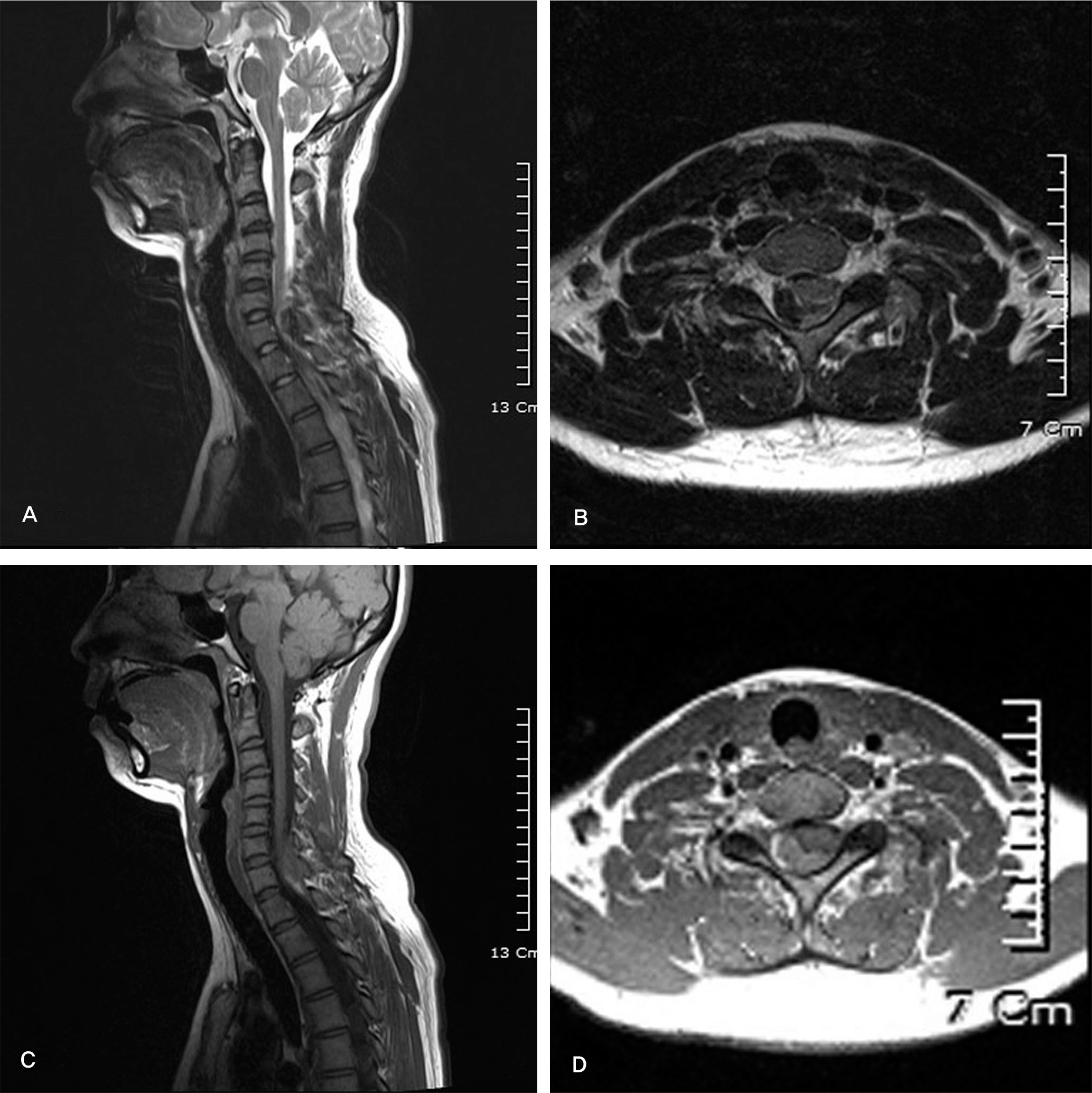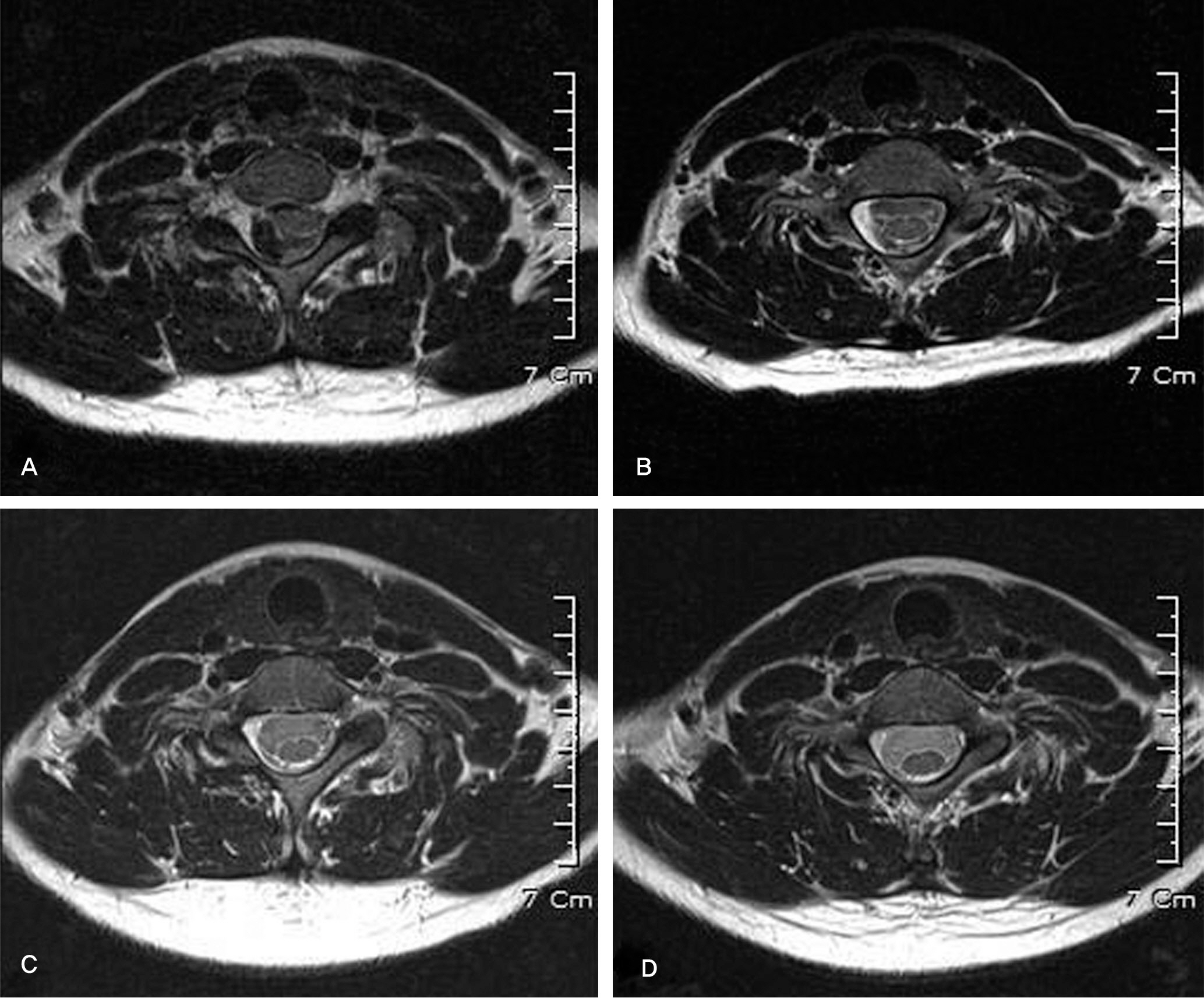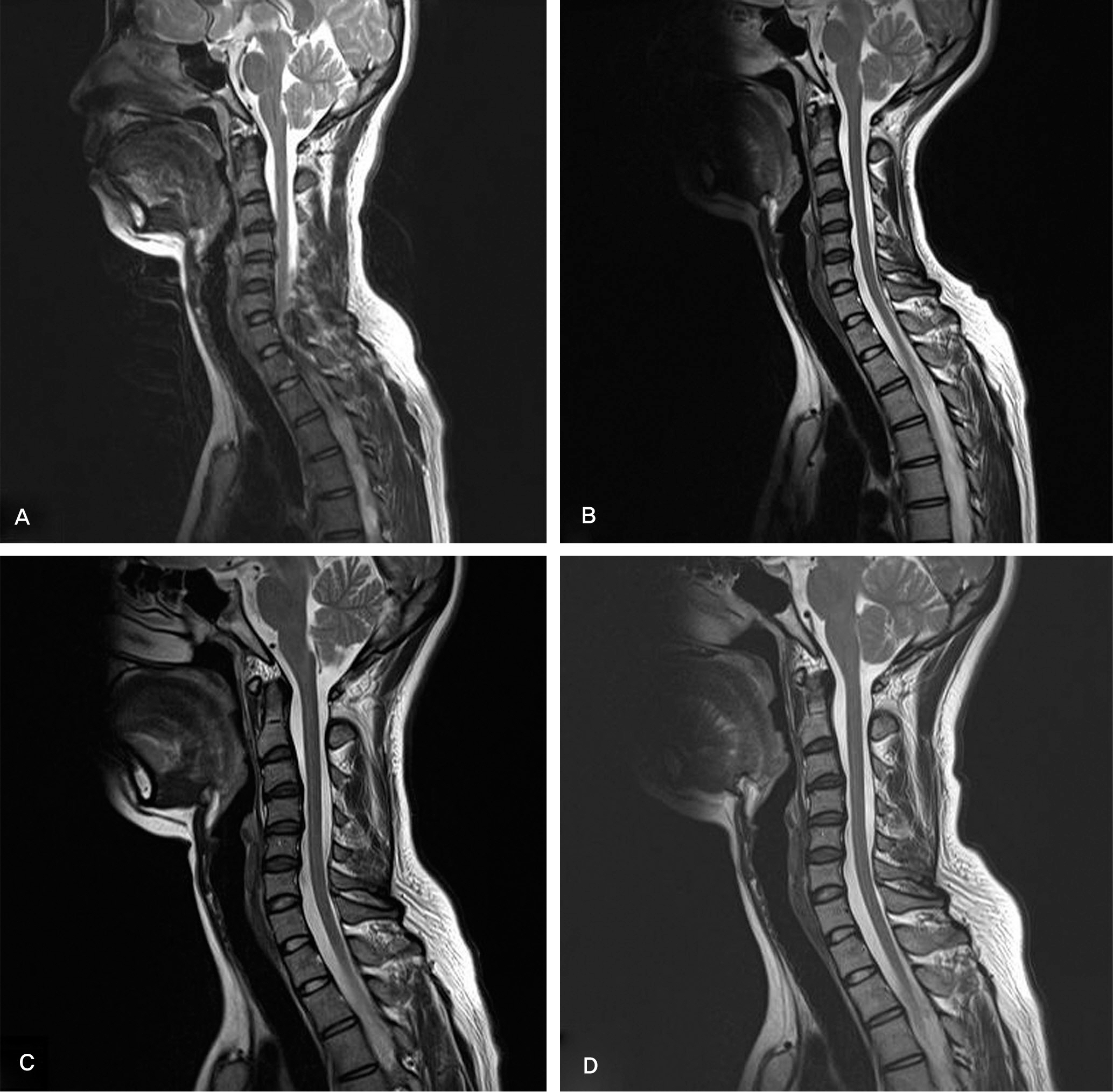J Korean Soc Spine Surg.
2011 Sep;18(3):163-168.
Acute Spontaneous Cervical Spinal Epidural Hematoma with Spontaneous Resolution: A Case Report
- Affiliations
-
- 1Department of Orthopedic Surgery, Ewha Womans University Mokdong Hospital, Seoul, Korea. ydkoh@ewha.ac.kr
Abstract
- STUDY DESIGN: This is a case report.
OBJECTIVES
We wanted to report on the spontaneous dissolution of acute spontaneous epidural hematoma of the cervical spine and the effectiveness of conservative treatments, in the cases where the symptoms related to spontaneous epidural hematoma improve by themselves in a short period. SUMMARY OF LITERATURE REVIEW: Cases of acute spontaneous epidural hematoma of the cervical spine are rarely reported; surgical decompression procedures have been performed in most of the cases as treatment. However, there are some reported cases of hematoma dissolving spontaneously after a certain period of conservative treatment.
MATERIALS AND METHODS
A 29 year-old female, who had no history of recent trauma, appealed neck pain with radiating pain in her upper right extremity due to acute epidural hematoma of the cervical spine which was diagnosed with MRI. The neck pain and radiating pain showed early recovery and gradual improvement during a period of the following 7 days after occurrence. MRI studies were done after 3 days, 7days, and 1 month from the day of occurrence of the symptoms.
RESULTS
In comparing MRI studies there were significant decreases in the sizes of hematoma, which implied spontaneous dissolution. Almost all the symptoms related to acute spontaneous epidural hematoma vanished after a 1-month period of conservative treatment.
CONCLUSIONS
Decompressive surgical procedure may not be necessary, if the symptoms related to spontaneous epidural hematoma improve by themselves in short period of conservative treatment.
Keyword
MeSH Terms
Figure
Reference
-
1. Al-Mutair A, Bender DA. Spinal Epidural Hematoma. J am Acad Orthop Surg. 2010; 18:494–502.
Article2. Jackson R. Case of spinal apoplexy. Lancet. 1869; 2:5–6.
Article3. Jamjoom ZA. Acute spontaneous spinal epidural hematoma: the influence of magnetic resonance imaging on diagnosis and treatment. Surg Neurol. 1996; 46:345–9. ..
Article4. Kato S, Seki H, Koshu K. Acute Cervical spinal Epidural Hematoma with Spontaneous Resolution –case report. Neurol Med Chir (Tokyo). 1994; 34:23–6.
Article5. Groen RJ. Non-operative treatment of spontaneous spinal epidural hematomas: a review of the literature and a comparison with operative cases. Acta Neurochir(Wien). 2004; 146:103–10.
Article6. Wagner S, Forsting M, Hacke W. Spontaneous Resolution of a Large Spinal Epidural Hematoma. Neurosurgery. 1996; 38:816–8.7. Shim DM, Jeung UO, Kim CS. Conservative Treatment of Spontaneous Spinal Epidural Hematoma. J Korean Soc Spine Surg. 2006; 13:319–22.8. Ogawa T, Abe S, Nakahara S, Sekino H, Tani S. Spontaneous extradural hematoma localized in the ventral side of the thoracic spinal cord –a case report. No Shinkei Geka. 1985; 13:439–43.9. Inamasu J, Hori S, Aoki K, Aikawa N, Maruiwa H, Toyama Y. Spontaneous spinal epidural hematoma. Am J Emerg Med. 2000; 18:837–9.
Article10. Le Coz P, Helias A, Woimant F, Haguenau M. Transient neurological manifestations disclosing spontaneous acute cervical epidural hematoma.Rev Neurol (paris). 1997; 153:325–30.
- Full Text Links
- Actions
-
Cited
- CITED
-
- Close
- Share
- Similar articles
-
- A Case of Spontaneous Cervical Spinal Epidural Hematoma: Case Report
- Spontaneous Cervical Epidural Hematomas in Healthy Young Adults: Case Report
- Spontaneous Resolution of Spinal Epidural Hematoma
- Spontaneous Spinal Epidural Hematoma
- Rapid Spontaneous Resolution of Idiopathic Cervico-thoracic Ventral Epidural Hematoma




